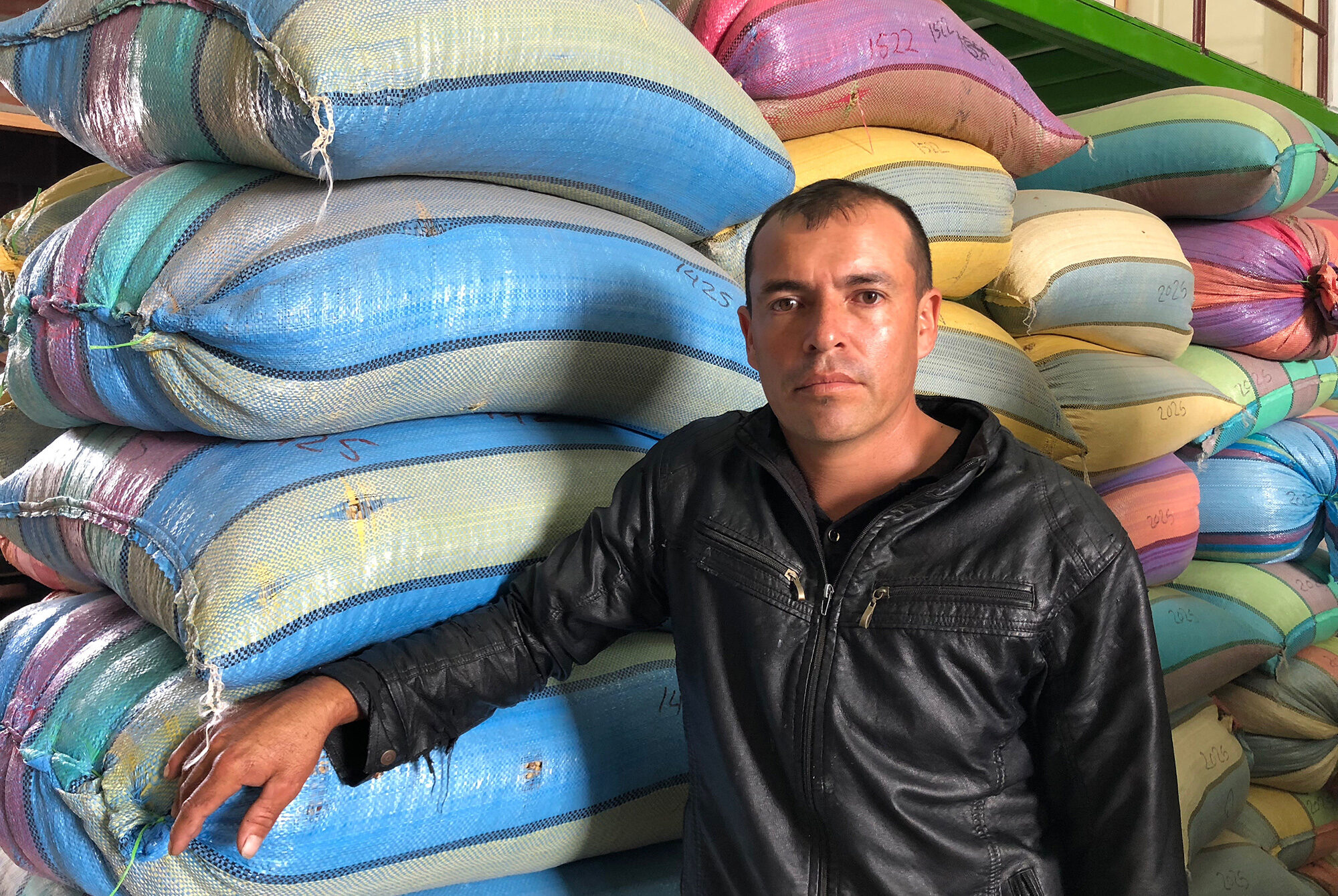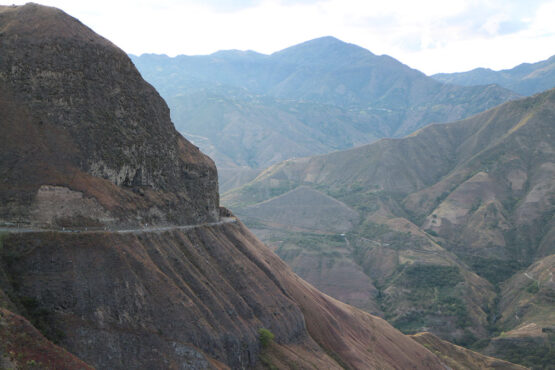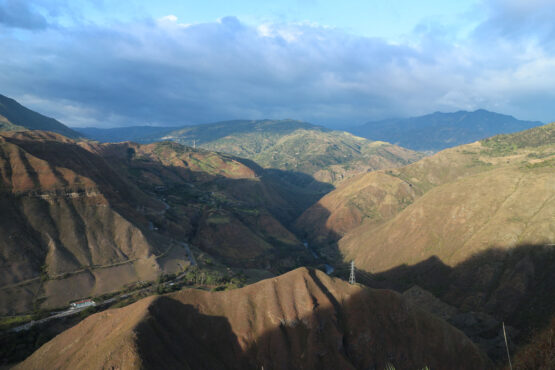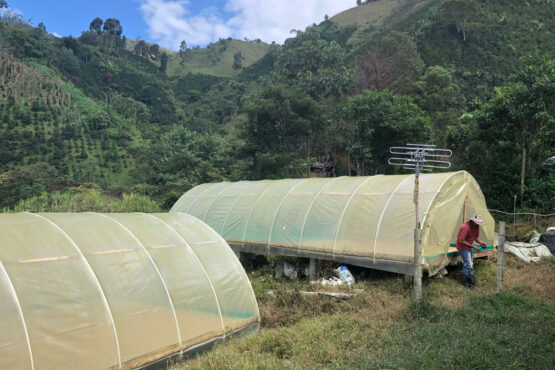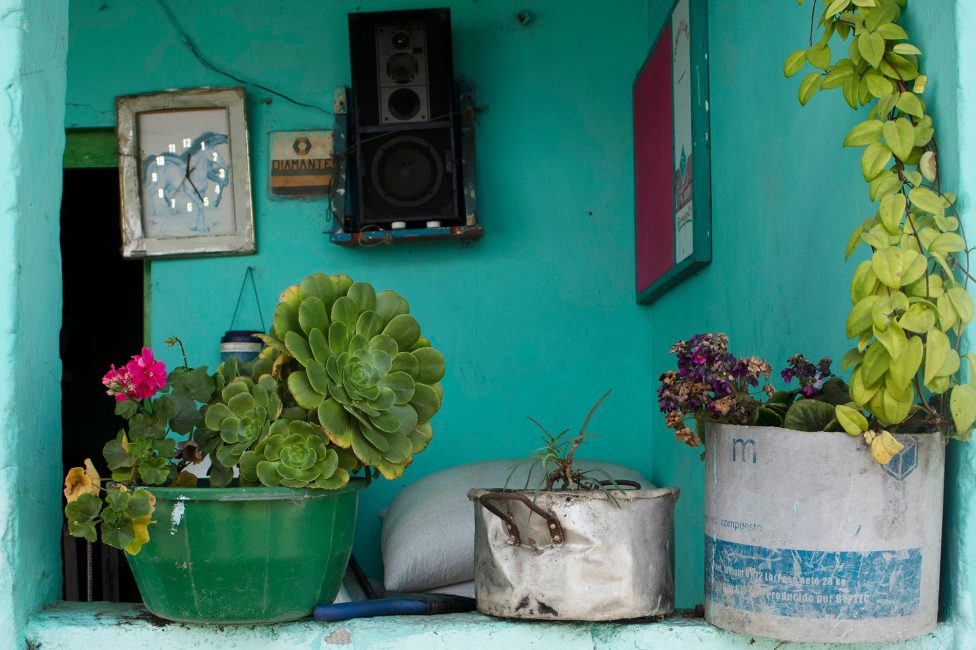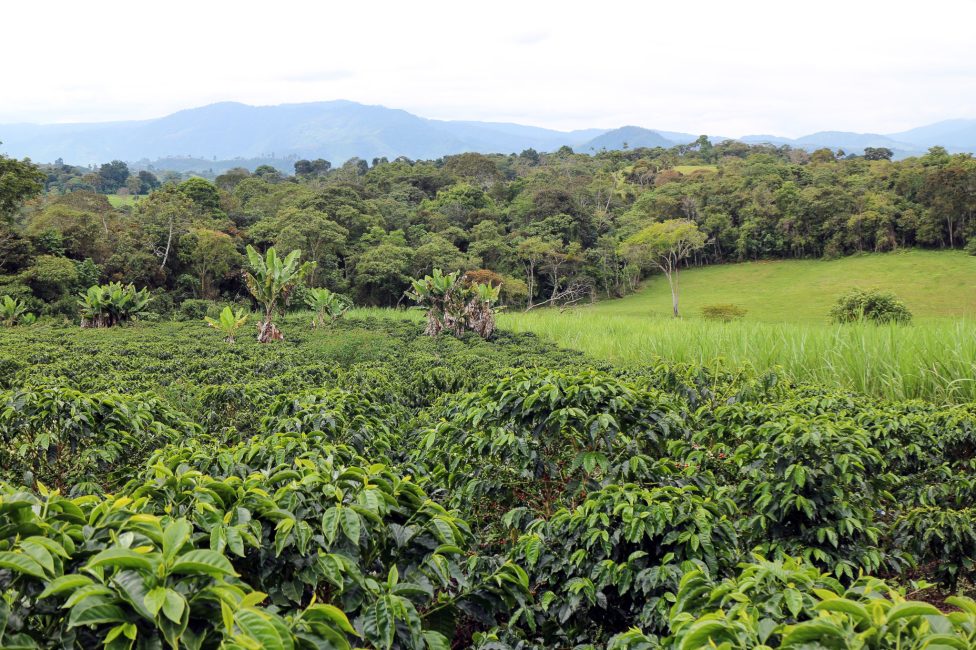El Diamante
Complex and distinct, with bright florals, honey sweetness and a tea-like body. Strawberry, blood orange and dark chocolate.
This 900kg micro-lot was produced by Miguel Loaiza and his family, on their 2.5-hectare farm El Diamante (meaning “the diamond” in Spanish). The farm is located in the Alto del Naranjal mountain range, at an astonishing elevation of 2,115m above sea level, in the outskirts of the main town of Buesaco, in Colombia’s Nariño state. Here, Miguel tends to over 10,000 Caturra and Colombia variety trees – two high-yielding varieties with good potential for quality when grown at higher altitudes.
Miguel is originally from a town called La Inmaculada, which is a couple of hours drive away from El Diamante. This region was controlled by different illegal armed groups in the 1990s and early 2000s, who forced local farmers to grow opium poppy plants and coca. Running away from this, Miguel and his family left their hometown and resettled just outside Buesaco, where they purchased a small plot of land and now focus on producing specialty coffee.
ABOUT BUESACO
Buesaco has been incredibly hard hit by violence, as much of the region was under the control of the FARC guerrillas. The elevation in much of the municipality was ideal for growing opium poppy plants and coca and, as the government did not have a heavy presence in rural Nariño, it was a perfect centre of operations for illegal groups. It wasn’t until the 2010s that guerrillas were forced out of Buesaco, and the town began its transformation into one of Colombia’s best-regarded coffee-growing regions. Since then, many coffees grown here have performed exceptionally well in Colombia’s Cup of Excellence competition. The consistency of these results made it clear to many growers from the region that their coffee had the potential to be sold into the specialty market, and that they had the opportunity to seek greater premiums than they were receiving through other certification schemes.
Today, specialty coffee plays a very important role in making Buesaco prosperous, and in ensuring its future is one of peace and not of recurrent conflict. In 2013, a small group of 17 growers formed the first regional association, called Grupo Empresarial Buesaco. With the assistance of the local technical school, group members organised themselves into a small operation with the aim of buying, warehousing and commercialising high quality coffee. The association grew very quickly and within four years they were able to form an offshoot group, Alianza Café, to focus solely on specialty-grade coffee. Its members are committed to running the association with transparency and with the final goal of improving the income of the nearly 400 growers that participate in their programs.
ABOUT NARIÑO
Nariño is located in southwest Colombia, bordering Ecuador. Most of the forty thousand coffee producers in Nariño own very small farms (averaging less than 2 hectares each) which are often located in very remote areas. Coffee in Nariño is grown at elevations that reach 2,200 metres above sea level, making it some of highest grown coffee in the world. Typically, it is very difficult to produce coffee at such high elevations (as many plants suffer from ‘die back’) – however, Nariño’s proximity to the equatorial line and steep hills around the volcanoes provide a great angle for sun exposure, creating the right micro-climate for coffee plants to thrive. The high elevation of cultivation, combined with warm tropical days and cools nights, allows for slow maturation and development of the coffee cherries, giving time for concentrated sugars to develop in the fruit and resulting in a very unique, sweet, and complex cup profile.
Nariño typically has a wet season with periods of continuous rain, followed by a dry season. Because of this, there is only one flowering period a year and, therefore, a single harvest, usually in April – July (this is different to other parts of Colombia where two harvests are the norm). In order to survive, producers in Nariño must have other economic activities, which typically include harvesting and selling plantains, fique (a fiber used to make rope) and/or cuy (guinea pigs).
HOW THIS COFFEE WAS PROCESSED
Coffee cherries were selectively hand-harvested, with most labour being provided by Miguel and his family. They were processed using the washed method at the farm’s ‘micro-beneficio’ (mill). The coffee was pulped using a small manual or electric pulper, and then placed into a fermentation tank, where it spent 36 hours, and then washed using cold, fresh water from surrounding streams. Coffee was then graded by density in washing channels and washed again using clean water.
Miguel then carefully dried the resulting parchment on a combination of his concrete patio in the sun and parabolic beds. The latter are constructed a bit like a ‘hoop house’ greenhouse, and protect the coffee from the rain and prevent condensation from dripping back onto the drying beans. These greenhouses are made out of plastic sheets and have adjustable walls to help with airflow, and temperature control to ensure the coffee can dry slowly and evenly. Luckily, Nariño is blessed with some of the best drying conditions in the country due to the micro-climate and high elevation of the region, providing lower relative humidity, more wind and more sunny days than other areas of the country.
Once dry, the coffee was delivered to Pergamino’s warehouse, where it was cupped and graded, and then rested in parchment until it was ready for export.
Read more about our Colombian export partner, Pergamino, here.
